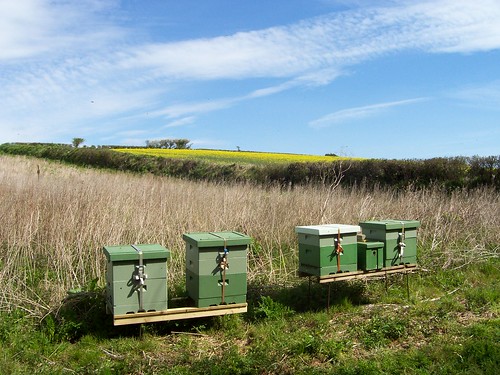I'll continue to stick my neck out on this one!
1. Benefits for varroa control
It knocks the varroa right back. I'm not sure of the percentages which differ but it is often said 85% of the varroa is in the sealed brood but I have seen other figures recently whivch suggest it may be less than this.
2. Best time of year to do the shook swarm
The time to avoid is when the bees being raised are going to be your main foraging force for your main nectar flow. So if July is your best month for nectar then not less than 6 weeks before this and probably 8 weeks to be on the safe side. The logic is a worker is three weeks as egg/larva/pupa then say 3 weeks as a house bee before becoming a forager. So not later than the middle of May and probably not later than the end of April.
3. Equipment needed.
A spare brood box and ideally a spare floor so they start with everything clean. Plus a queen excluder to put under the brood box for the first week or so, until they have their own brood to look after. They should also be fed unless the hive is next to a field of OSR in flower. 1:1 syrup is recommended. I use a rapid feeder but others recommend a bucket with gauze thingy. I have not tried delaying feeding but there is probably sense in not feeding them for the first 2 or 3 days so they empty their honey crop. This is a technique used for foulbroods in Europe.
4. Does the hive need to be relocated 3 miles away ?
No, the old hive is moved to one side and the "new" floor and brood box is put on the old site. This way the bees which take to the air can find their way home.
5. Can you use foundation instead of drawn combs
The whole concept is based on the bees using fondation. If you use drawn comb you risk introducing disease but more importantly I suspect it would not trigger what I call the "swarm reflex" which is what makes the bees work like mad and the queen to lay frantically once she has somewhere to lay -which may only be two or 3 days after the manipulation.
6. Likelihood of natural swarming occurring
Some report significantly less swarming but you must still continue normal inspections for queen cells once they get going.
7. Do you then routinely do another varroa control (ie. oxalic)
There are two alternatives, one is to put a bait frame, which is a frame of unsealed brood in with the foundation for about a week or until most of it has been sealed. This mops up lot of the mites which survived the shook swarm by being attached to bees. Once the frame is mostly sealed and before any bees emerge from it the frame is removed and destroyed.
You could also do some sort of chemical treatment such as an oxalic acid trickle. With no brood present this will be very effective.
And of course you could try both.
8. Does the age of the queen make this more/less successful?
If the queen is on her last legs then she was probably going to fail anyway. I have not seen any specific advice on this but as with normal hive management things are going to be better with a young queen.
9. Advantages/disadvantages in general ?
Here is where it gets perhaps controversial! Experience indicates the bees are heathier and stronger for a shook swarm. Disdvantages - you end up with a lot of frames to melt down and of course it is extra work at a time in the apiary when there are probably lots of other things going on such as queen rearing and collecting the OSR honey.
OSR is a factor in all this. I have shown the picture below before but the hive on the left was given a shook swarm on about 25 March. The picture was taken just as the OSR was coming in to flower on 13 April. The upper box is full of frames of foundation and there was no queen excluder between them and from memory the lower box had about 7 frames of brood. I am not very good at record keeping but I recall getting at least two full supers off this hive, which would have been a bit over 100 lbs. I guess I would have had more if they had not been given a shook swarm but by mid-May there were a total of 15 frames of brood and shortley afterwards I split the whole colony into four using queen cells from another hive.





















































